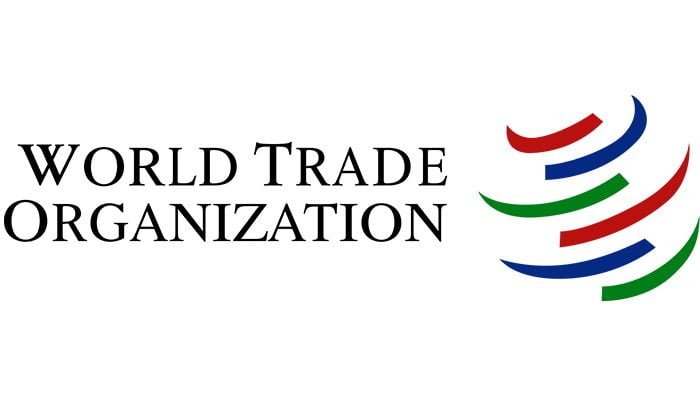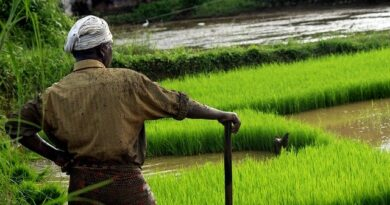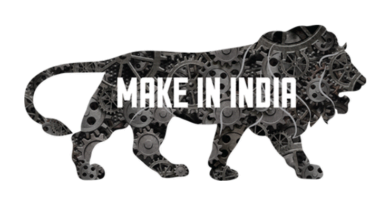World Trade Organization (WTO)
Why in news?
India’s seventh Trade Policy Review (TPR) began on Wednesday, 6th January 2021, at the World Trade Organization in Geneva. The TPR is an important mechanism under the WTO’s monitoring function, and involves a comprehensive peer-review of the Member’s national trade policies. India’s last TPR took place in 2015.
Introduction:
- WTO is an international organization set up in 1995 by replacing the General Agreement on Trade and Tariffs (GATT) under the Marrakesh Agreement.
- It is the only global international organization dealing with the international Trade between nations.
- Its HQ is located in Geneva, Switzerland.
- Currently, WTO has 164 members and India is a founding member of WTO.
Evolution of WTO:
- After the end of World War-II, various international organizations were formed to facilitate collaboration between countries in dealing with economic, social, and technical problems.
- For the development of world economy and seamless trade among all the countries, a dire need was felt for an international organization for regulating international trade.
- In 1945 a conference known as the Bretton Woods Conference (by two Bretton wood institutions- IMF and World Bank) was held for the creation of international trade organization (ITO) which finally could not be ratified due to lack of approval by the US and many other major countries.
- As the US was emerging world power after World War-II, hence the creation of ITO without the US was meaningless.
- Meanwhile, through negotiations, a multilateral agreement was concluded in 1947 known as the General Agreement on Tariffs and Trade (GATT).
- Various conferences of GATT were held on periodic intervals for negations on trade. Finally, during the Uruguay round of conference held from 1986-1994, agreement on the creation of WTO was finally ratified through the Marrakesh Agreement.
- India has been a member of GATT since 1948 and a founding member of WTO. China joined WTO only in 2001 and Russia in 2012.
Objectives of WTO
- To formulate and implement rules for international trade.
- To provide a platform for negotiating and monitoring further trade liberalization.
- To provide a platform for the settlement of disputes.
- Providing assistance to the developing, least-developed and low-income countries in transition to adjust to WTO rules and disciplines through technical cooperation and training.
- To cooperate with the other major economic institutions (like UN, World Bank, IMF etc) involved in global economic management.
Structure of WTO
The basic structure of WTO is as appended below:-
- Ministerial Conference – It is the topmost decision-making body of the WTO. Usually, it meets after every two years. It brings together all WTO participants.
- The General Council –
- The General Council is the WTO’s highest-level decision-making body located in Geneva, meeting regularly to carry out the functions of the WTO.
- It has representatives (usually ambassadors or equivalent) from all member governments and has the authority to act on behalf of the ministerial conference which only meets about every two years.
- The General Council also meets, under different rules, as
- The General Council,
- the Trade Policy Review Body,
- and the Dispute Settlement Body (DSU)
- Three councils, each handling a different broad areas of trade, report to the General Council:
- The Council for Trade in Goods (Goods Council)
- The Council for Trade in Services (Services Council)
- The Council for Trade-Related Aspects of Intellectual Property Rights (TRIPS Council)
- As their names indicate, the three are responsible for the workings of the WTO agreements dealing with their respective areas of trade.
- Again they consist of all WTO members.
- Other councils/bodies – There are many other bodies like Goods Council, Services Council, Trade Policy Review Body, Dispute Settlement Body etc. which deals with other specific issues.
Ministerial Conferences of WTO
| Ministerial Conferences | Place | Year | Description |
| MC1 | Singapore | 1996 | Ministers of finance, trade, foreign, and agriculture from more than 120 countries participated and the following issues were in discussion. trade and investment trade facilitation transparency in government procurement trade and competition These are known as the Singapore Issues. |
| MC2 | Geneva, Switzerland | 1998 | Discussions on the implementation of Singapore Issues. Further discussions for the next round related to Export subsidies, market access, etc. |
| MC3 | Seattle, USA | 1999 | The Uruguay Round was discussed. Further discussions on agricultural and services mandated at the last Ministerial. The Ministerial Conference ended without a conclusion though. |
| MC4 | Doha, Qatar | 2001 | The Doha Round was discussed. |
| MC5 | Cancún, Mexico | 2003 | Discussions on the progress of the Doha Development Agenda and other negotiations from the last Ministerial. |
| MC6 | Hong Kong | 2005 | Discussions on aiming to conclude the Doha Round by 2006. Adoption of the ‘Swiss Formula’ to cut down tariffs on non-agricultural goods (NAMA) by both developed and developing countries with different coefficients. |
| MC7 | Geneva, Switzerland | 2009 | This meeting didn’t revolve around the Doha Round. Ministers discussed various other ideas for further development. The theme of MC7 was ‘The WTO, the Multilateral Trading System and the Current Global Economic Environment’ |
| MC8 | Geneva, Switzerland | 2011 | Discussions on multiple topics for least developed nations and trade policy reviews. WTO approved Montenegro, Russian Federation, and Samoa accessions. Doha Round was discussed to make the mandate more effective, operational, and precise. |
| MC9 | Bali, Indonesia | 2013 | The ‘Bali Package’ was adopted by the WTO that aimed at the following points: Boosting trade in the least developed countries (LDCs) Higher food security provisions for developing countries Streamlining trade The Bali Package is a selection of issues from the broader Doha Round negotiations. Yemen became a part of WTO. |
| MC10 | Nairobi, Kenya | 2015 | Discussion on agriculture, cotton, and issues of LDCs. The Nairobi Package was adopted by WTO that delivered beneficial commitments to WTO’s poorest members. |
| MC11 | Buenos Aires, Argentina | 2017 | Discussions on e-commerce duties, fisheries subsidies, and other commitments to negotiations in all sectors. |
| MC12 | Nur-Sultan, Kazakhstan | 2021 | Will take place in June 2021. |
Principles of WTO
The WTO Agreements are based on the following simple and fundamental principles:-
- Non Discrimination
- Most Favored Nation – All nations should be treated equally. No one country can grant any other member country any special favour. For example, if one country lower tariff to one country then it has to be lowered to all other member countries.
- National Treatment– Same treatment to all products, either local or foreigners. Fair and equal treatment is given to local as well as the products imported from other countries.
- Reciprocity – Lowering of import duties and other trade barriers in return for similar concessions from another country.
- Predictability through Binding and enforceable commitments – To make the business environment stable and predictable.
- Transparency – The WTO members need to publish their trade regulations and to notify changes in trade policies to the WTO.
- Encouraging Development and Economic Reforms – All efforts are made by the WTO system to contribute to development.
Important Trades Agreements of WTO
The important trade agreements concluded under WTO are – Agreement on Agriculture (AoA),
- Agreement on TRIPS (Trade-Related Aspects of Intellectual Property Rights),
- Agreement on the Application of Sanitary and Phytosanitary Measures (SPS),
- Agreement on Technical Barriers to Trade (TBT),
- Agreement on Trade-Related Investment Measures (TRIMS),
- General Agreement on Trade in Services (GATS) etc.
Agreement on Agriculture (AoA):
- It was negotiated during the Uruguay Round of the GATT and was concluded with the establishment of the WTO in 1995.
- Through AoA, WTO aims at reforming trade in agriculture with a fair and market-driven system.
- The Agreement allows governments to support their rural economies, but only allowed those policies that cause less trade “distortions”.
- This agreement has fixed commitments from all member states on the following three agricultural supply chain system:-
- Improving Market access– This can be done by removing various trade barriers by the member states. By fixing the tariffs and progressively promoting free trade among member states which will ultimately lead to an increase in market access.
- Domestic Subsidies– It basically motivates for the reduction in domestic subsidies that distorts free trade and fair prices. This is based on the premise that not all subsidies distort trade to the same extent. Under this agreement, Subsidies can be categorized into the following three boxes –
(a) Green Box – All those subsidies that do not distort trade or causes minimal distortion, comes under the green box.
Ex-All government services such as research, disease control, and infrastructure and food security. Also, all those subsidies are given to the farmers that directly do not affect international trade also comes under the green box.
(b) Amber Box – All kinds of domestic subsidies or support that can distort production and trade (with some exceptions) fall into the Amber Box. The measures to support prices come under this box. The exception is the provision that accepts subsidies upto 5% of agricultural production for developed countries, 10% for developing countries.
(c) Blue Box – All those Amber Box subsidies which tend to limit the production comes under Blue Box. This can be increased without limit as long as subsidies are linked to production-limiting programs.
- Export subsidies – All those subsidies that make the export of agricultural products cheaper are called export subsidies. These are basically presumed to have trade-distorting effects. This agreement prohibits the use of export subsidies by the member states for agriculture products.
Why WTO replaced the GATT
- The GATT was only a set of rules and multilateral agreements and lacked institutional structure.
- The GATT 1947 was terminated and WTO preserved its provisions in form of GATT 1994 and continues to govern trade in goods.
- The trade in services and intellectual property rights were not covered by regular GATT rules.
- The GATT provided for consultations and dispute resolution, allowing a GATT Party to invoke GATT dispute settlement articles if it believes that another Party’s measure caused it trade injury.
- The GATT did not set out a dispute procedure with great specificity resulting in lack of deadlines, laxity in the establishment of a dispute panel and the adoption of a panel report by the GATT Parties.
- It made the GATT as a weak Dispute Settlement mechanism.
The WTO and the United Nations (UN)
- Although the WTO is not a UN specialized agency, it has maintained strong relations with the UN and its agencies since its establishment.
- The WTO-UN relations are governed by the “Arrangements for Effective Cooperation with other Intergovernmental Organizations-Relations between the WTO and the United Nations” signed on 15 November 1995.
- The WTO Director General participates to the Chief Executive Board which is the organ of coordination within the UN system.
India’s trade concerns and WTO
Appended below please find India’s concerns related to trade in WTO:-
- Tariff on steel and aluminium – USA govt imposed 10% tariff on aluminium and 25% tariff on steel against various trade partners. India wants that it should be removed or it will raise the issue in WTO.
- Export Subsidy Issue – USA dragged India to WTO and raised concern on the export subsidy regime provided to the Indian companies in the form of SEZ, MEIS, EPCG, etc. USA argues that as India’s Per Capita Income has increased from $ 1000, India can’t use the export subsidy regime as per the ASCM.
- Agricultural subsidies – The present quota of subsidies is based on the price levels of 1986-88. Presently the minimum support price (MSP) concept which provides subsidies to the farmers in India falls under the Amber box. It can directly affect India’s food security program. India wants that it should be at the current price level and the amber box concept should be done away with. However, through a ‘peace clause’ agreed to during the Bali conference allows India to carry on with its PDS program as of now. But the developed member states are not taking any steps for permanent solution of this problem.
- Special and differential treatment (SDT) – During Doha round, member states agreed to provide favourable treatment to developing nations. However, developed countries are denying the emerging economies such as India and China as unworthy of this provision.
- Issues related to intellectual property rights – The issues of compulsory licensing of medicines have been resolved through TRIPS. However, the developed nations are trying to push for TRIPS+ commitments.
Conclusion
Today, the world is going through the protectionism, trade war (like USA & China), and Brexit making global economy squeezed. The role of WTO in future is very crucial to preserve global liberalised economic system evolved since the end of the 2nd World War.
It is right time when countries like USA giving threat to withdraw from WTO making it dysfunctional, India and other emerging economies like Brazil, South Africa etc can provide a strong base for strong WTO with saving interests of developing countries.



